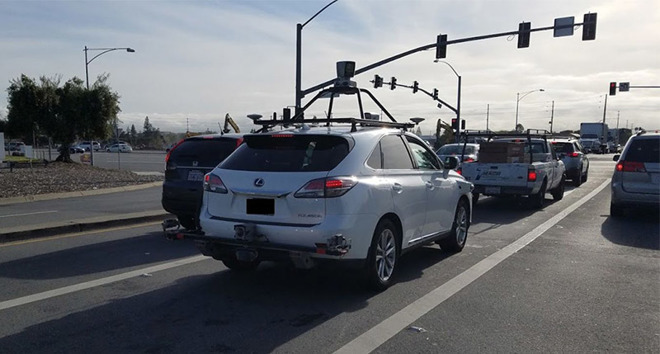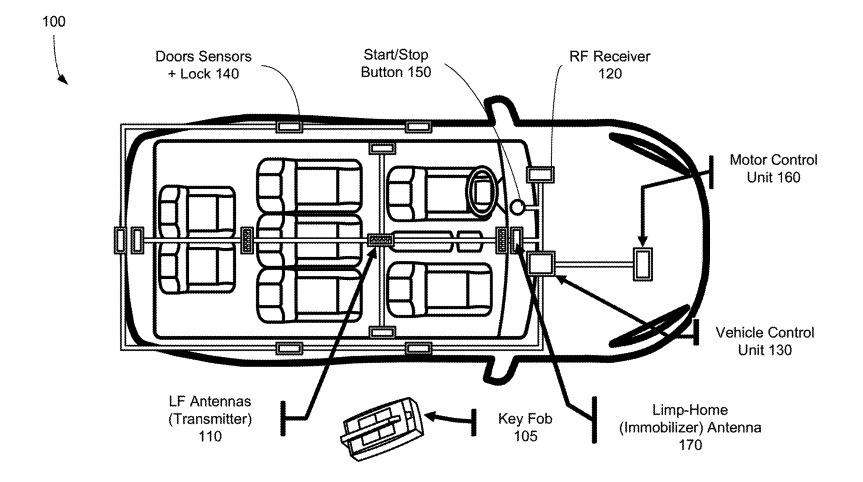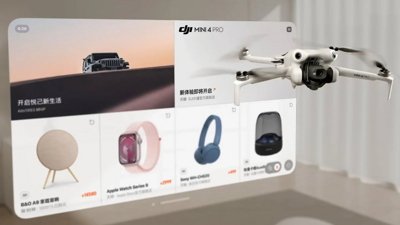Improved keyless entry system could replace car key fob with iPhone
Apple wants iPhone owners to be able to use their mobile devices as alternatives to a keyless entry system for their car, with a proposal that would let users unlock and start a vehicle simply by bringing their mobile device with them to the driving seat.
The patent application for "Enhanced automotive passive entry," published on Thursday by the U.S. Patent and Trademark Office, describes ways that could be used to improve upon the key fob used for keyless entry functions found in many vehicles. Such systems allow for a car to be unlocked when the key fob is near to the vehicle, and to enable drivers to start the vehicle by pushing a button, instead of inserting a key and turning it.
Apple's application also suggests this style of functionality could be applied to a mobile device other than a key fob, such as an iPhone or a wearable device like an Apple Watch. The filing even notes that key fobs can be "bulky and be an additional item that a user must carry," further suggesting the use of an iPhone or another mobile device would be ideal, reducing the amount of items the driver would need to possess on a daily basis.
According to the filing, the existing system using "magnetic signals emitted from magnetic antennas" in the car are measured by the vehicle to determine range and position. This could be improved, as the magnetic fields are short range, and that current techniques used for the driving feature are susceptible to hacking, allowing access to the inside of the vehicle and potential theft of the vehicle itself.
Apple proposes the use of both magnetic antennas and radio frequency antennas to determine range, including analyzing the RF received signal strength indicator, time-f-flight value, and other signal properties. This would allow for an unlocking system to detect at a far longer range than available at present.
The suggested system would also be capable of locating the device within the vehicle cabin, with its internal position potentially enabling specific features to work. Potentially, this could mean a car will be unlocked if the device is inside, but the engine won't start until it is located at the front or in a predetermined area.
To save from adding extra components, the magnetic antennas could also be used for RF signals. A similar efficiency idea could be had with mobile devices, with the NFC antenna potentially reusable as a magnetic antenna for this purpose while the use of three-dimensional magnetic antennas in the vehicle would limit the need for extra magnetic antennas to be added to mobile devices.
Apple files a large number of patent applications every week, and while the publication by the USPTO confirms the concepts are being considered by Apple, it isn't a guarantee the idea will appear in a future consumer device.
There are, however, plans to implement a new "digital key" for vehicles that would allow an iPhone or other NFC-enabled devices to unlock or start the vehicle. The Car Connectivity Consortium, which counts Apple among its charter members, published the Digital Key Release 1.0 specification in June, advising on how such a smartphone-based digital key would function.
Apple has also considered the possibility of using the iPhones as a security token in other ways. A recent patent application describes how an iPhone or another device could securely store credentials, such as from a passport, and then could be used as an alternative credential for authorities to accept.
 Malcolm Owen
Malcolm Owen












 Amber Neely
Amber Neely
 William Gallagher
William Gallagher













